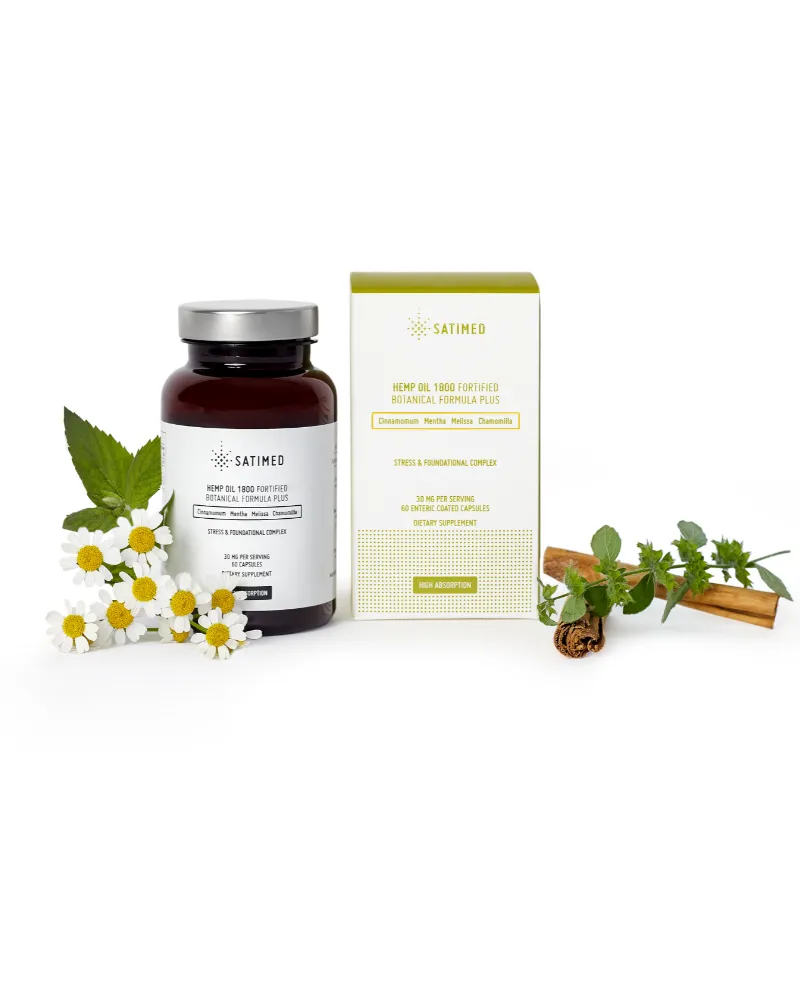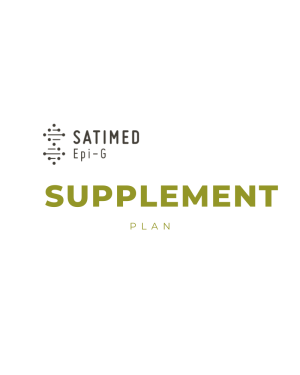About Melanoma
Melanoma is a deadly form of skin cancer that accounts for only 2 to 4% of all skin cancer cases, yet 79% of all skin cancer related deaths.
In 2011, there were an estimated 960,231 people living with melanoma of the skin in the United States.[1]
Despite its deadly nature, when melanoma is diagnosed early it is considered very survivable. According to the data from SEER 18 (2004-2010), 91.3% of early diagnosed melanoma cases survive without recurrence at the 5 year mark.[2]
The incidence for melanoma is currently increasing at a rate of 3% per year, the fastest of any cancer.[3]
Although the incidence of melanoma is highest among older adults, it can occur in any age group. For example, it is the most common cancer among women age 20-30.
HEALTHY DIET
Consume a vegetable rich, Mediterranean-style diet, emphasizing whole foods, cruciferous vegetables (broccoli, cauliflower, kale, brussel sprouts, etc.) and foods high in beta-carotene, such as pumpkin, tomato, melon, kale, broccoli, mango, grapefruit, papaya, guava, carrots, spinach, peppers and squash.
A number of risk factors are known to be associated with melanoma, primarily based on genetics (such as skin tone, eye color and hair color), level of sunburn and tanning, and genetic risk factors.
Among the most well-established risk factors include:
1. A history of melanoma in the family, particularly a first degree relative. 10% of people with melanoma have a family history of the cancer[4]
2. Having fair skinned complexions – this includes freckles, skin that burns easily, green or blue eyes, or red or blonde hair
3. Having a history of sunburns (especially blistering sunburns in childhood) and long term exposure to tanning
Other known risk factors include:
1. Exposure to radiation, solvents, vinyl chloride and PCBs
2. Smoking
3. Having a family history of unusual moles (atypical nevus syndrome).[5]
ENVIRONMENT MATTERS
Do not over tan or sunburn.[6] Even tanning without risk of sunburn contributes to the risk of developing melanoma.
Physical Exam – Melanomas can occur in sun exposed skin, as well as areas not normally exposed to the sun, such as the abdomen, soles of the feet and genital areas. Despite a fair complexion and white genetic profile there is one type of melanoma that is found more frequently in African Americans and Asians, which occurs on the palms of the hands, soles of the feet and nailbeds, called Acral lentiginous melanoma.
Biopsy – A procedure to remove the abnormal tissue and a small amount of normal tissue around it. A pathologist will examine the biopsied tissue microscopically. Patients may want to have the sample of tissue checked by a second pathologist. If the abnormal mole or lesion is malignant, the sample of tissue may also be tested for certain gene changes.
Cancer staging and classification – Staging is the process of finding out how much cancer there is in a person’s body and where it’s located. Melanoma stages are assigned based on the size or thickness of the tumor, whether or not it has spread to the lymph nodes or other organs, and certain other characteristics, such as growth rate. Physical exams, imaging procedures, laboratory tests, pathology reports, and surgical reports provide information to determine the stage of a cancer. Very thin melanomas (<.75 mm in thickness), are associated with very high cure rates from surgery alone, so early diagnosis is very valuable.
Genetic Evaluation Genetic evaluation may be recommended, as a number of genetic mutations have been associated with prognosis (outlook) and help to predict how beneficial different treatments may be.[7]
WATCH YOUR WEIGHT
Avoid obesity. High fat diets and obesity combined increase risk for melanoma.[8][9]
Emphasize:
1. Foods high in beta-carotene, which can then convert to retinol, such as pumpkin, tomato, melon, kale, broccoli, mango, grapefruit, papaya, guava, carrots, spinach, peppers and squash.
2. Cruciferous vegetables, such as broccoli, cauliflower, cabbage, etc.
3. Whole foods (foods that are as close to their natural form as possible)
4. Low sugar/low glycemic diet (Glycemic index (GI) and glycemic load (GL) are measures of the effect on blood glucose level after a food containing carbohydrates is consumed)
5. Omega-3 fatty acids, found in cold water fish such as sardines, wild-caught salmon, cod, mackerel, tuna
6. High fiber, from whole grains, beans, vegetables and fruits
7. Healthy fats, from avocados, nuts, seeds, olive oil, coconut oil, cold water fish
8. For animal protein, choose lean poultry and fish over red meat, and aim to view meat as a condiment rather than a staple. Try to choose grass fed and organic meats and eggs whenever possible. Eat no fish larger than a salmon to minimize environmental contaminants, including mercury.
Avoid:
1. Processed and grilled meats. Also, try to limit intake of red meat
2. Fast foods, fried foods, baked goods and packaged, processed foods
3. Sugar, sweeteners and artificial sweeteners
4. Vegetable oils, shortening, margarine and anything with hydrogenated or partially hydrogenated oils
Hemp Oil 1800 Fortified Capsules
- Capsulesare based on SatiMedTM Botanical Formula Plus, and include an essential combination of herbal compounds from the Hemp, Cinnamon, Mint, Balm, and Chamomile plants, and are formulated in natural Hemp Seed oil.
- Suggested dose: 2-4 capsules per day before the meal.
Cellular Pro
- Cellular Pro provides pterostilbene, a methylated resveratrol that occurs naturally in berries. This formula also contains resveratrol, curcumin and vitamin D3 , which compliment pterostilbene in supporting metabolic health. Ptersotilbene targets PPAR alpha, which plays important roles in lipid metabolism. Reserveratrol supports mitochondrial function by promoting the actions of SIRT1, a cellular enzyme that contributes to healthy aging.*
- Suggested usage:As a dietary supplement, adults take 1 capsule daily.
- Berberine, used in conjunction with the chemotherapy medication doxorubicin, decreased melanoma tumor cell volume and replication of metastatic cells.[19],[20],[21]
- Suggested dose: 500mg, 3 times per day.
Maitake Mushroom (Beta Glucans)
- Studies on melanoma in animal cells demonstrate powerful anti-cancer properties of the mushroom.[24]
- Suggested dose: Capsules range from 100 to 500 mg, with at least 12-25 mg of standardized extract, 1-3 times per day.
- Magnesium 400 FORTIFIED Capsules are based on SatiMedTM Botanical Formula Plus, and include an essential combination of high absorption Magnesium bisglycinate complex, Piperine and Vitamin B6.
- Magnesium 400 FORTIFIED supports normal physiologic function, nervous system, muscles and bones, reduces tiredness and fatigue. Vitamin B-6 (pyridoxine) is important for normal brain function and for keeping the nervous system and immune system healthy.
[1] http://seer.cancer.gov/statfacts/html/melan.html
[2] Acral Lentiginous Melanoma – Misdiagnosis, referral delay and 5 years specific survival according to site.Boriani F, O’Leary F, Tohill M, Orlando A.Eur Rev Med Pharmacol Sci. 2014 Jul;18(14):1990-6.
[3] Howlader N, Noone AM, Krapcho M, et al. SEER Cancer Statistics Review, 1975-2009 (Vintage 2009 Populations). Bethesda, MD: National Cancer Institute; 〈http://seercancergov/csr/1975_2009_pops09/〉.
[4] Olsen CM, Carroll HJ, Whiteman DC. Familial melanoma: a meta-analysis and estimates of attributable fraction. Cancer Epidemiol Biomarkers Prev. 2010 Jan;19(1):65-73. doi: 10.1158/1055-9965.EPI-09-0928.
[5] Usher-Smith JA, Emery J, Kassianos AP, Walter FM. Risk Prediction Models for Melanoma: A Systematic Review. Cancer Epidemiol Biomarkers Prev. 2014 Jun 3.
[6] Vogel RI, Ahmed RL, Nelson HH, Berwick M, Weinstock MA, Lazovich D. Exposure to indoor tanning without burning and melanoma risk by sunburn history. J Natl Cancer Inst. 2014 Jul 16;106(7).
[7] Kosiniak-Kamysz A, Marczakiewicz-Lustig A, Marcińska M, Skowron M, Wojas-Pelc A, Pośpiech E, Branicki W. Increased risk of developing cutaneous malignant melanoma is associated with variation in pigmentation genes and VDR, and may involve epistatic effects. Melanoma Res. 2014 Aug;24(4):388-96.
[8] Jung JI, Cho HJ, Jung YJ, Kwon SH, Her S, Choi SS, Shin SH, Lee KW, Park JH. High-fat diet-induced obesity increases lymphangiogenesis and lymph node metastasis in the B16F10 melanoma allograft model: Roles of adipocytes and M2-macrophages. Int J Cancer. 2014 May 20.
[9] Skowron F, Bérard F, Balme B, Maucort-Boulch D. Role of obesity on the thickness of primary cutaneous melanoma. J Eur Acad Dermatol Venereol. 2014 Apr 21.
[10] Huang XY, Zhang SZ, Wang WX. Enhanced antitumor efficacy with combined administration of astragalus and pterostilbene for melanoma. Asian Pac J Cancer Prev. 2014;15(3):1163-9.
[11] Chu DT, Lin JR, Wong W.
[The in vitro potentiation of LAK cell cytotoxicity in cancer and aids patients induced by F3–a fractionated extract of Astragalus membranaceus]. Zhonghua Zhong Liu Za Zhi. 1994 May;16(3):167-71.
[12] Siddiqui IA, Bharali DJ, Nihal M, Adhami VM, Khan N, Chamcheu JC, Khan MI, Shabana S, Mousa SA, Mukhtar H. Excellent anti-proliferative and pro-apoptotic effects of (-)-epigallocatechin-3-gallate encapsulated in chitosan nanoparticles on human melanoma cell growth both in vitro and in vivo. Nanomedicine. 2014 Jun 3.
[13] Chen CC, Hsieh DS, Huang KJ, Chan YL, Hong PD, Yeh MK, Wu CJ. Improving anticancer efficacy of (-)-epigallocatechin-3-gallate gold nanoparticles in murine B16F10 melanoma cells. Drug Des Devel Ther. 2014 May 8;8:459-74.
[14] Kewitz S, Volkmer I, Staege MS. Curcuma Contra Cancer? Curcumin and Hodgkin’s Lymphoma. Cancer Growth Metastasis. 2013 Aug 8;6:35-52. doi: 10.4137/CGM.S11113. eCollection 2013.
[15] Das L, Vinayak M. Curcumin attenuates carcinogenesis by down regulating proinflammatory cytokine interleukin-1 (IL-1α and IL-1β) via modulation of AP-1 and NF-IL6 in lymphoma bearing mice. Int Immunopharmacol. 2014 May;20(1):141-7.
[16] Zhu G, Zhang Q, Dai H, Shen Q.
[Effect of curcumin on expressions of mitogen-activated protein kinases and matrix metalloproteinases in Jurkat cells]. Nan Fang Yi Ke Da Xue Xue Bao. 2013 Dec;33(12):1792-5.
[17] Marczylo TH, Verschoyle RD, Cooke DN, et al. Comparison of systemic availability of curcumin with that of curcumin formulated with phosphatidylcholine. Cancer Chemother Pharmacol. 2007 Jul;60(2):171-7.
[18] DiSilvestro RA1, Joseph E, Zhao S, Bomser J. Diverse effects of a low dose supplement of lipidated curcumin in healthy middle aged people. Nutr J. 2012 Sep 26;11:79. doi: 10.1186/1475-2891-11-79.
[19] Mittal A, Tabasum S, Singh RP. Berberine in combination with doxorubicin suppresses growth of murine melanoma B16F10 cells in culture and xenograft. Phytomedicine. 2014 Feb 15;21(3):340-7.
[20] Kim HS, Kim MJ, Kim EJ, Yang Y, Lee MS, Lim JS. Berberine-induced AMPK activation inhibits the metastatic potential of melanoma cells via reduction of ERK activity and COX-2 protein expression. Biochem Pharmacol. 2012 Feb 1;83(3):385-94.
[21] Hamsa TP, Kuttan G. Berberine inhibits pulmonary metastasis through down-regulation of MMP in metastatic B16F-10 melanoma cells. Phytother Res. 2012 Apr;26(4):568-78.
[22] Lee YH, Kumar NC, Glickman RD. Modulation of photochemical damage in normal and malignant cells by naturally occurring compounds. Photochem Photobiol. 2012 Nov-Dec;88(6):1385-95.
[23] Habibie, Yokoyama S, Abdelhamed S, Awale S, Sakurai H, Hayakawa Y, Saiki I. Survivin suppression through STAT3/β-catenin is essential for resveratrol-induced melanoma apoptosis. Int J Oncol. 2014 Aug;45(2):895-901.
[24] Masuda Y, Murata Y, Hayashi M, Nanba H. Inhibitory effect of MD-Fraction on tumor metastasis: involvement of NK cell activation and suppression of intercellular adhesion molecule (ICAM)-1 expression in lung vascular endothelial cells. Biol Pharm Bull. 2008 Jun;31(6):1104-8.
[25] Zhang YP, Chu RX, Liu H. Vitamin a intake and risk of melanoma: a meta-analysis. PLoS One. 2014 Jul 21;9(7):e102527.
[26] Asgari MM, Brasky TM, White E. Association of vitamin A and carotenoid intake with melanoma risk in a large prospective cohort. J Invest Dermatol. 2012 Jun;132(6):1573-82.
[27] Caini S, Boniol M, Tosti G, Magi S, Medri M, Stanganelli I, Palli D, Assedi M, Marmol VD, Gandini S. Vitamin D and melanoma and non-melanoma skin cancer risk and prognosis: A comprehensive review and meta-analysis. Eur J Cancer. 2014 Jul 30. pii: S0959-8049(14)00806-5.
[28] Field S, Davies J, Bishop DT, Newton-Bishop JA. Vitamin D and melanoma. Dermatoendocrinol. 2013 Jan 1;5(1):121-9. doi: 10.4161/derm.25244.
[29] Zeljic K, Kandolf-Sekulovic L, Supic G, Pejovic J, Novakovic M, Mijuskovic Z, Magic Z. Melanoma risk is associated with vitamin D receptor gene polymorphisms. Melanoma Res. 2014 Jun;24(3):273-9. doi: 10.1097/CMR.0000000000000065.
[30] Garland CF, French CB, Baggerly LL, et al. Vitamin D supplement doses and serum 25-hydroxyvitamin D in the range associated with cancer prevention. Anticancer Res. 2011 Feb;31(2):607-11.






Reviews
There are no reviews yet.